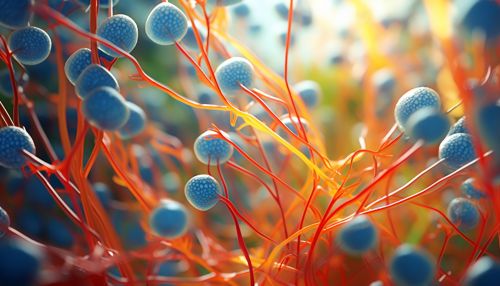The Biological Mechanisms of Plant Adaptation to Extreme Heat
Introduction
Plants, as sessile organisms, are constantly exposed to a variety of environmental stresses, including extreme heat. The biological mechanisms of plant adaptation to extreme heat involve a complex interplay of molecular, physiological, and ecological processes. These mechanisms enable plants to survive and reproduce under high temperature conditions, which are becoming increasingly common due to climate change.
Molecular Mechanisms
Plants respond to extreme heat at the molecular level through a variety of mechanisms, including changes in gene expression, protein synthesis, and metabolic processes.
Heat Shock Proteins
One of the most well-studied molecular responses to heat stress is the production of heat shock proteins (HSPs). These proteins act as molecular chaperones, helping other proteins to fold correctly and maintain their functional conformation under heat stress.


Gene Expression
In addition to HSPs, plants also modulate the expression of a wide range of other genes in response to heat stress. These include genes involved in signal transduction, transcriptional regulation, protein degradation, and various metabolic processes. The specific genes that are up- or down-regulated can vary depending on the species of plant and the severity and duration of the heat stress.
Metabolic Changes
Extreme heat can also induce changes in plant metabolism. For example, heat stress can lead to an increase in the production of reactive oxygen species (ROS), which can cause oxidative damage to cells. To counteract this, plants have developed antioxidant systems that can detoxify ROS and repair oxidative damage.
Physiological Mechanisms
At the physiological level, plants adapt to extreme heat through changes in processes such as photosynthesis, transpiration, and respiration.
Photosynthesis
Heat stress can have a significant impact on photosynthesis, the process by which plants convert light energy into chemical energy. High temperatures can reduce the efficiency of photosynthesis by damaging the photosynthetic apparatus and disrupting the balance between light absorption and energy utilization.


Transpiration
Transpiration, the process of water movement through a plant and its evaporation from aerial parts, is another physiological process that is affected by heat stress. High temperatures can increase the rate of transpiration, leading to water loss and potentially causing dehydration. However, plants have developed various mechanisms to limit transpiration under heat stress, such as closing their stomata or developing thicker leaves.
Respiration
Respiration, the process by which plants convert stored energy into usable energy, can also be affected by heat stress. High temperatures can increase the rate of respiration, leading to a higher demand for oxygen and potentially causing a depletion of stored energy.
Ecological Mechanisms
At the ecological level, plant adaptation to extreme heat involves changes in species distribution, community composition, and ecosystem function.
Species Distribution
Extreme heat can influence the distribution of plant species. Some species may shift their range towards cooler areas, such as higher altitudes or latitudes, in response to increasing temperatures. This can lead to changes in the composition of plant communities and ecosystems.


Community Composition
Heat stress can also affect the composition of plant communities. Some species are more tolerant of high temperatures than others, and these species may become more dominant in plant communities under conditions of extreme heat.
Ecosystem Function
Extreme heat can also impact ecosystem function. For example, it can affect processes such as nutrient cycling and primary productivity, which in turn can influence the structure and function of the entire ecosystem.
Conclusion
The biological mechanisms of plant adaptation to extreme heat are complex and multifaceted, involving changes at the molecular, physiological, and ecological levels. Understanding these mechanisms is crucial for predicting how plants will respond to future climate change and for developing strategies to help plants cope with increasing temperatures.
